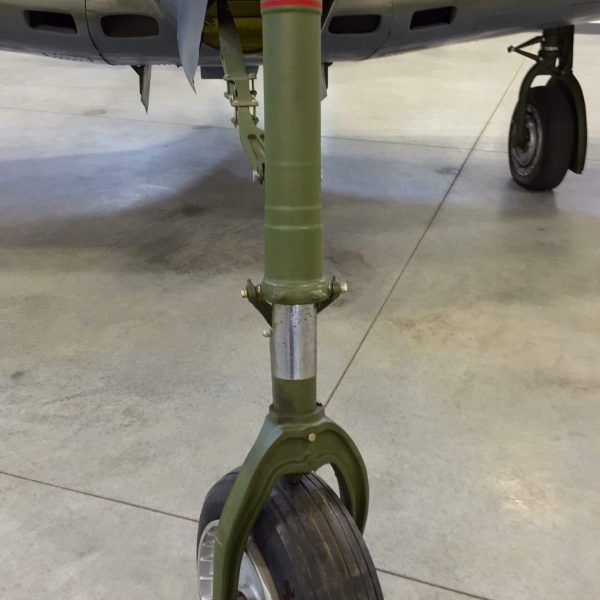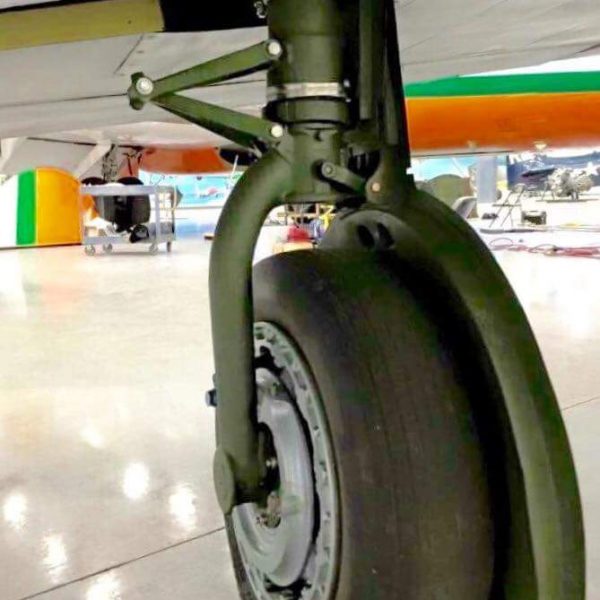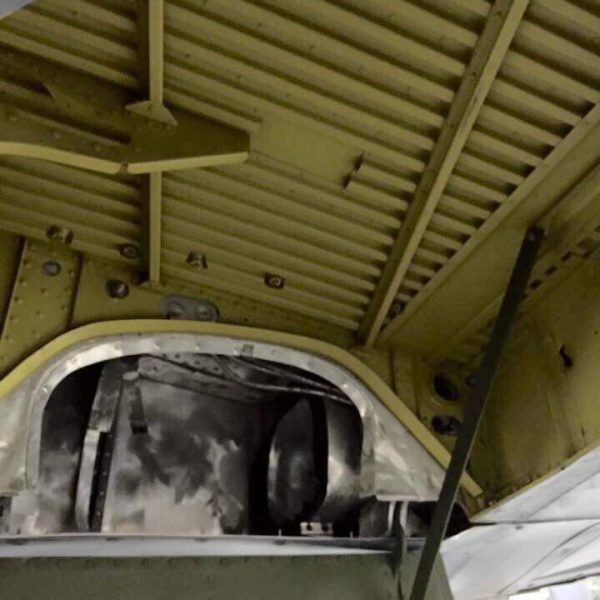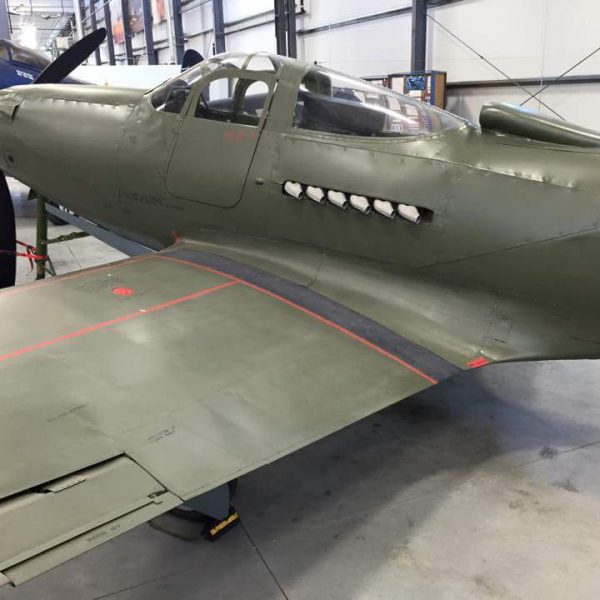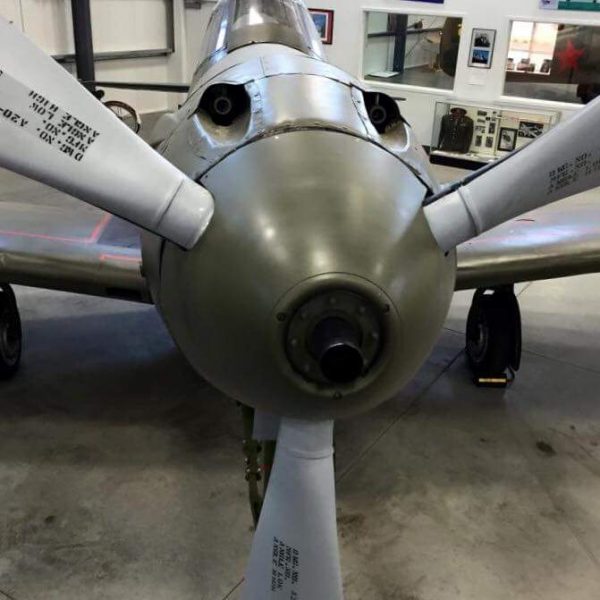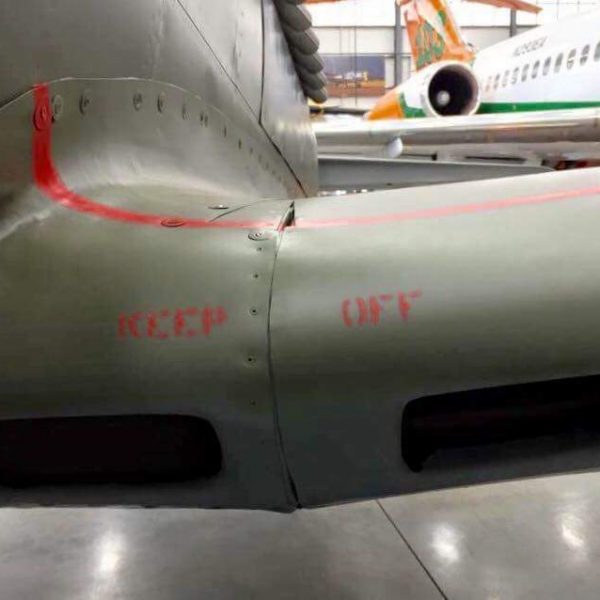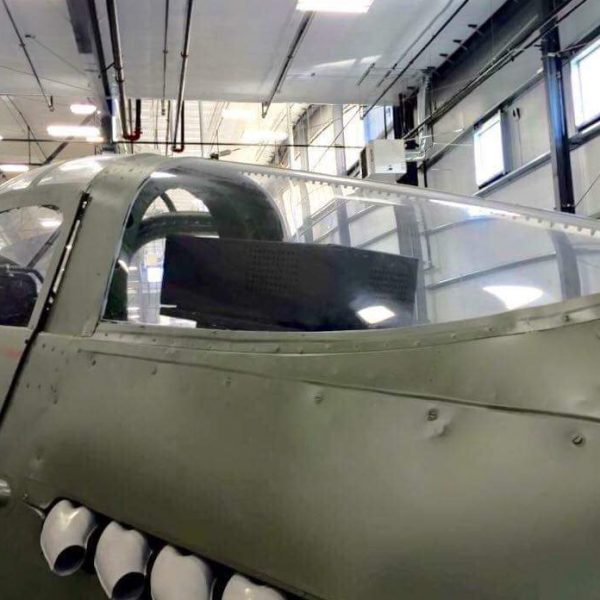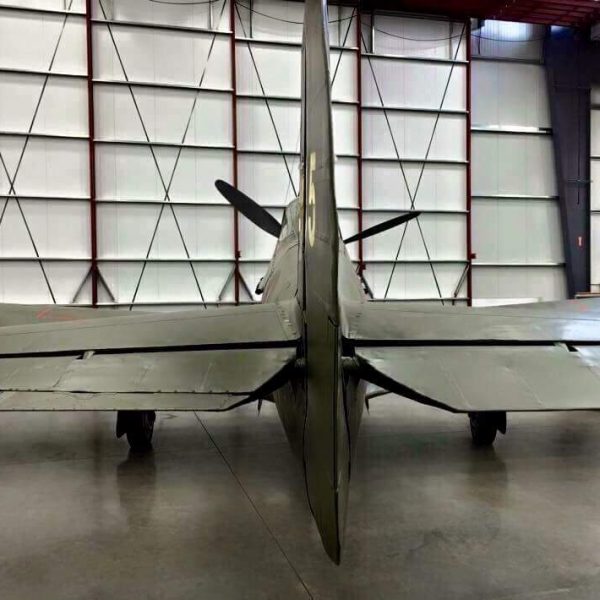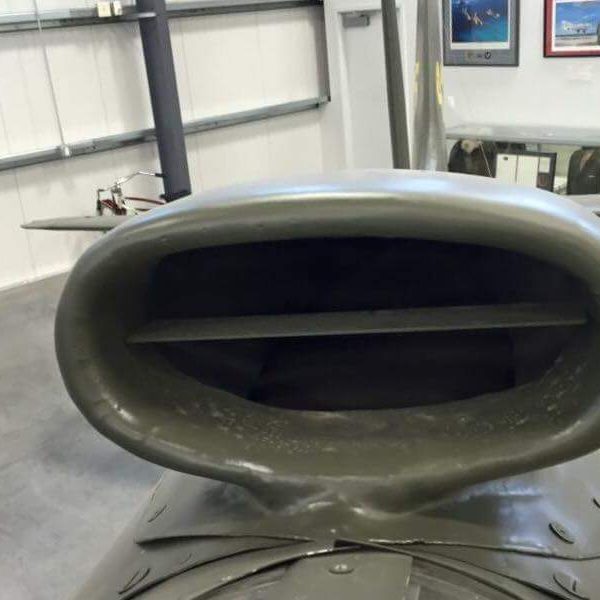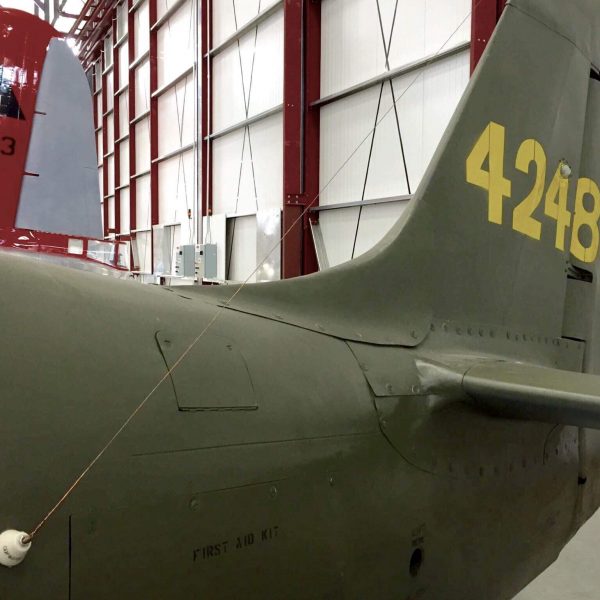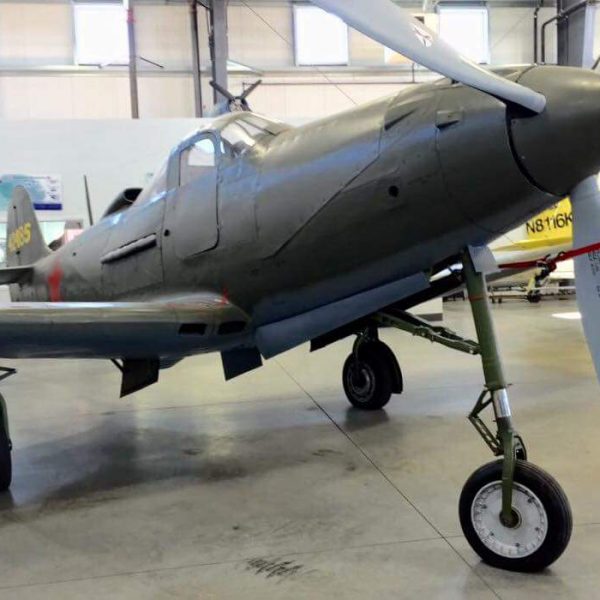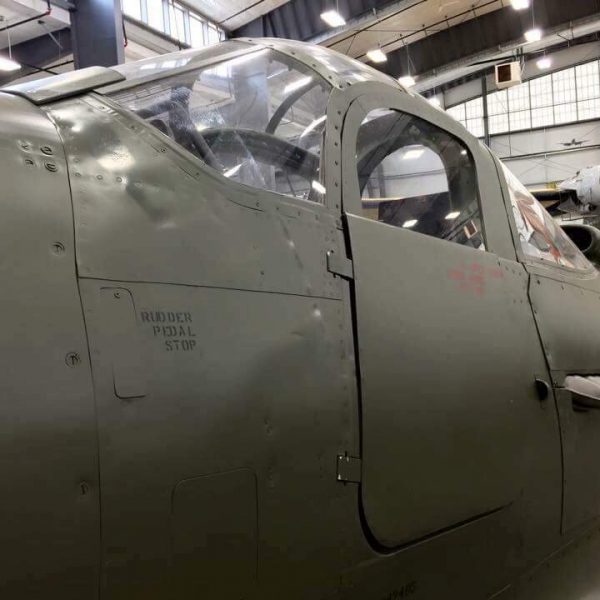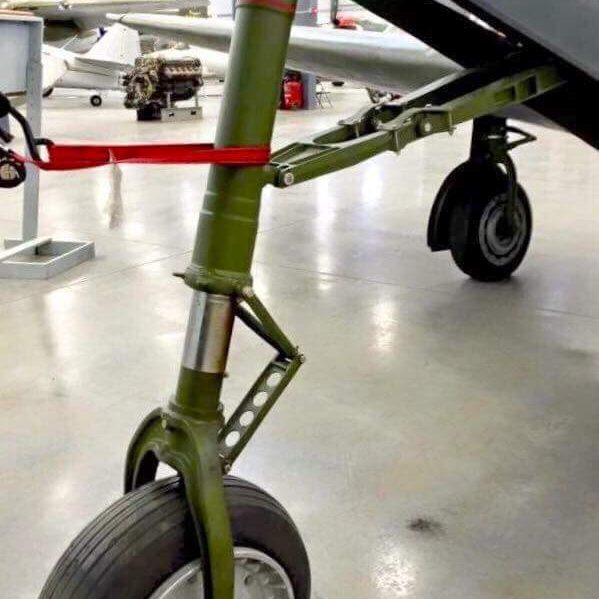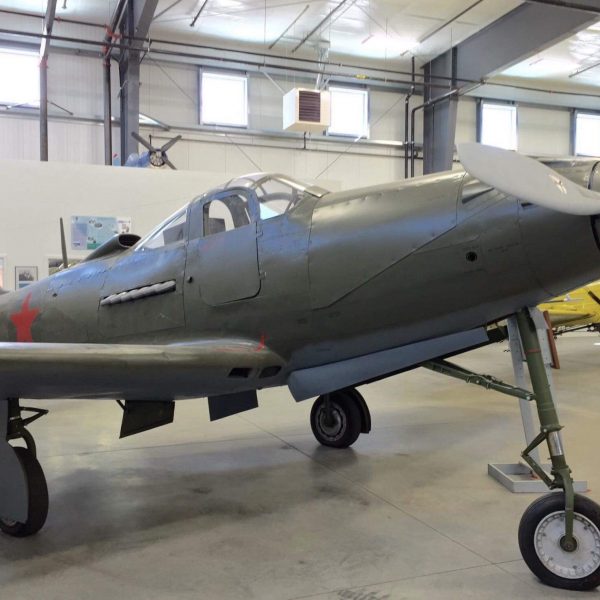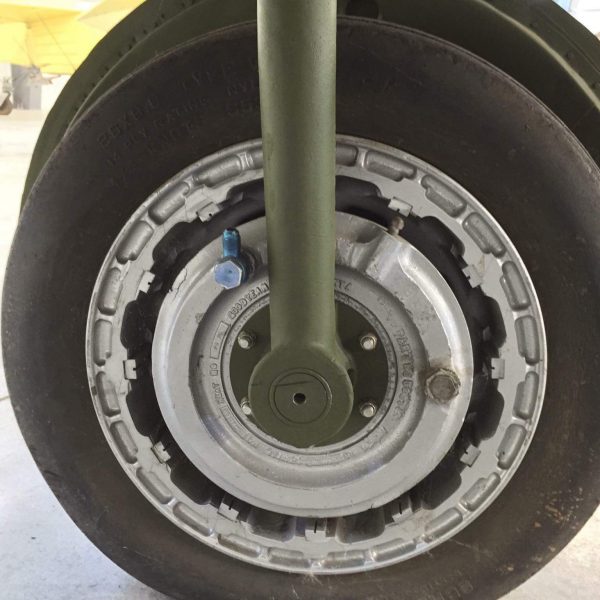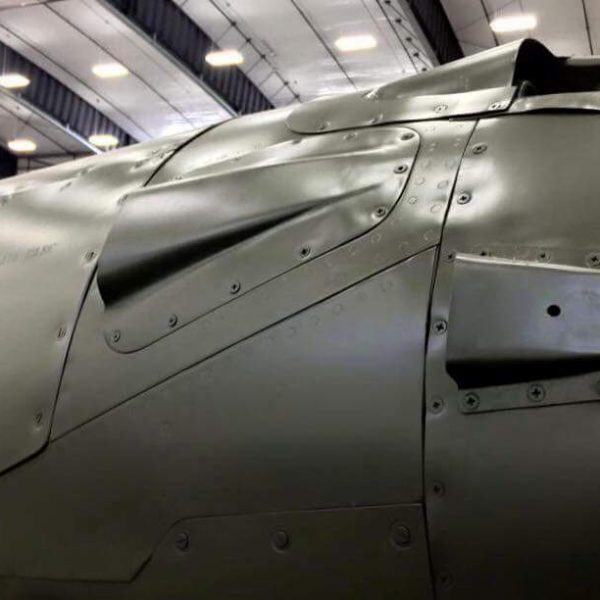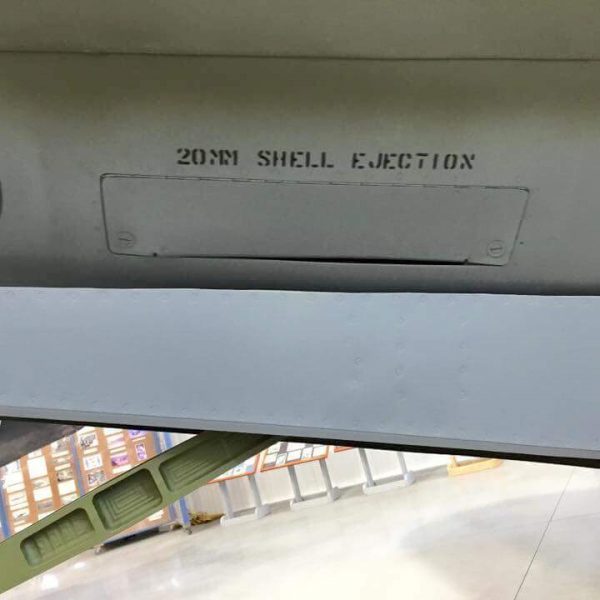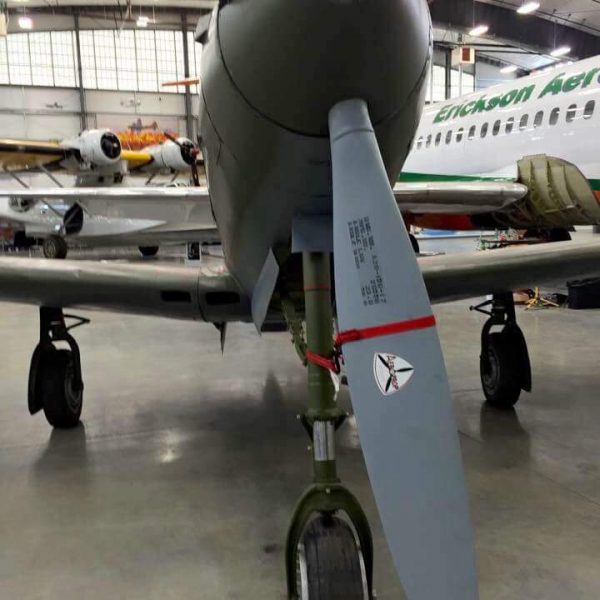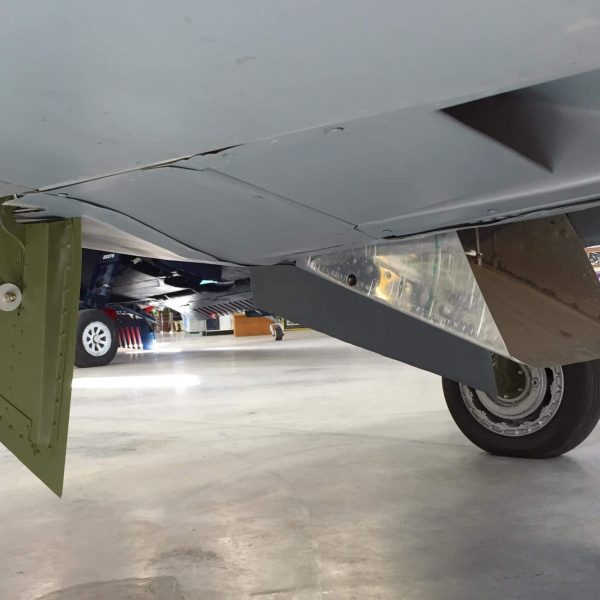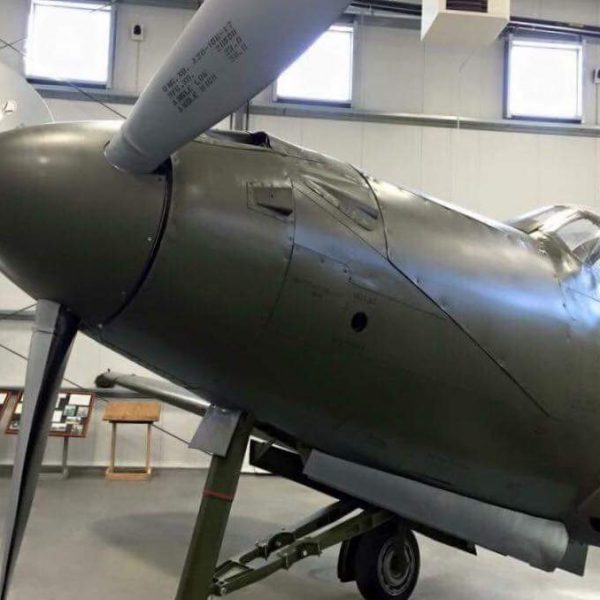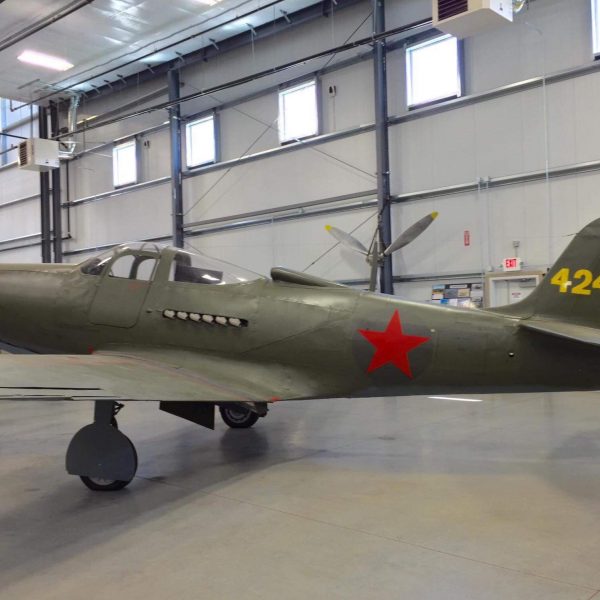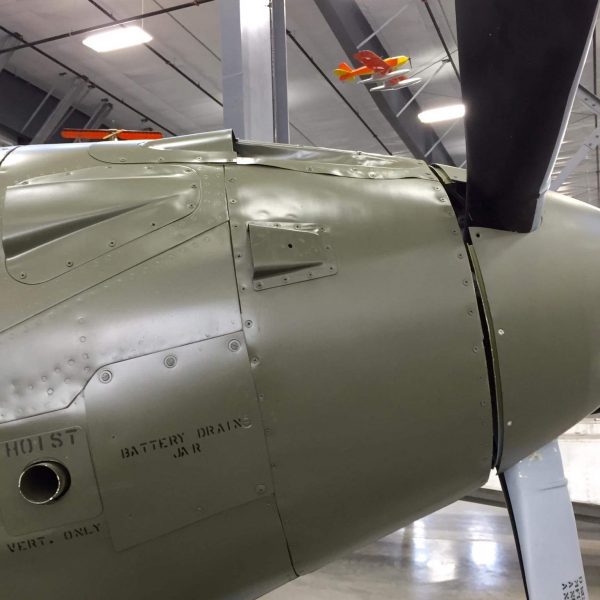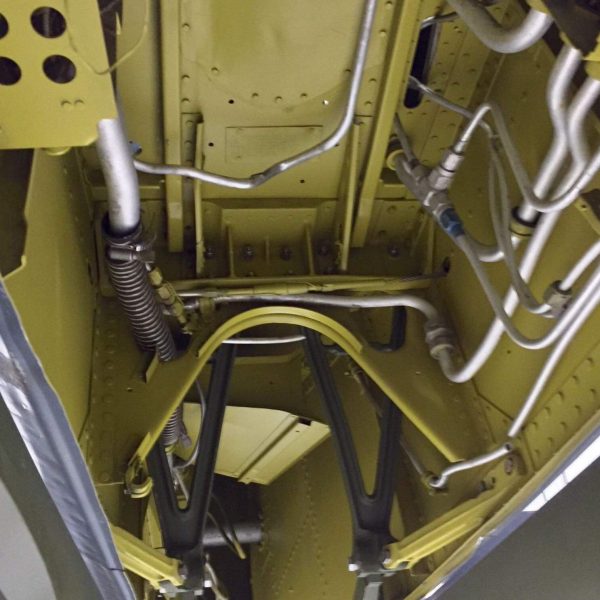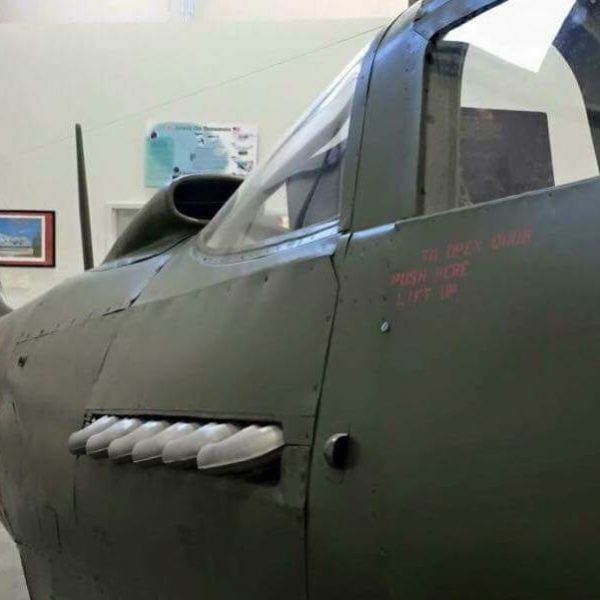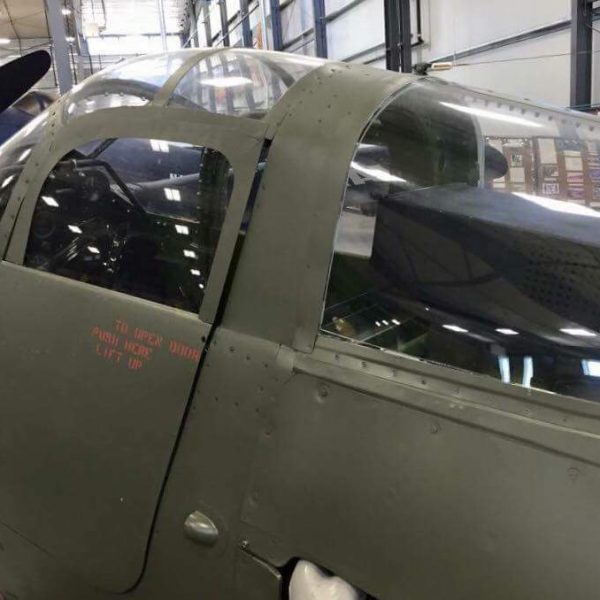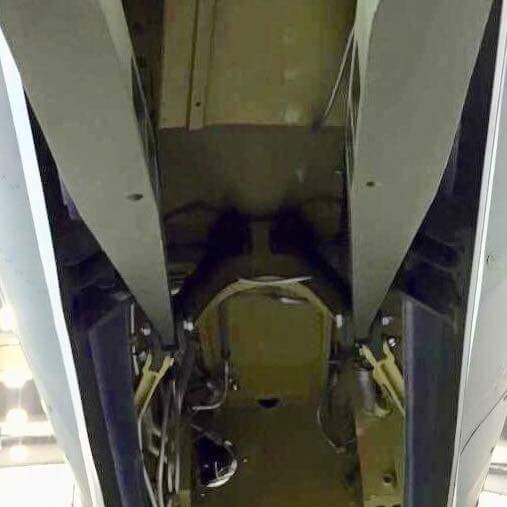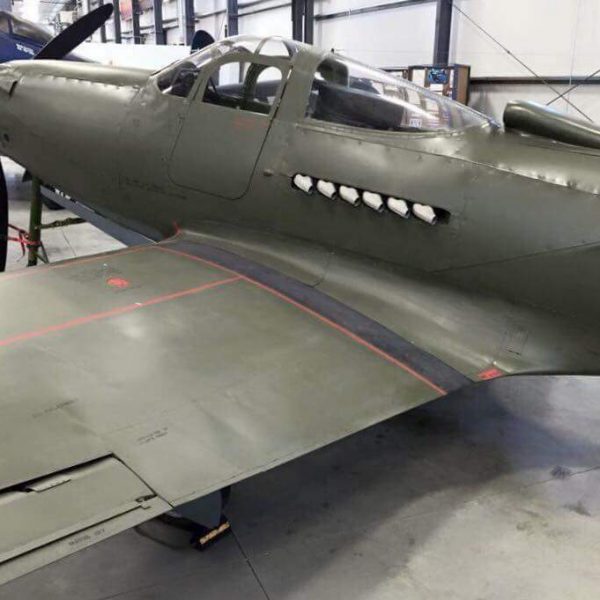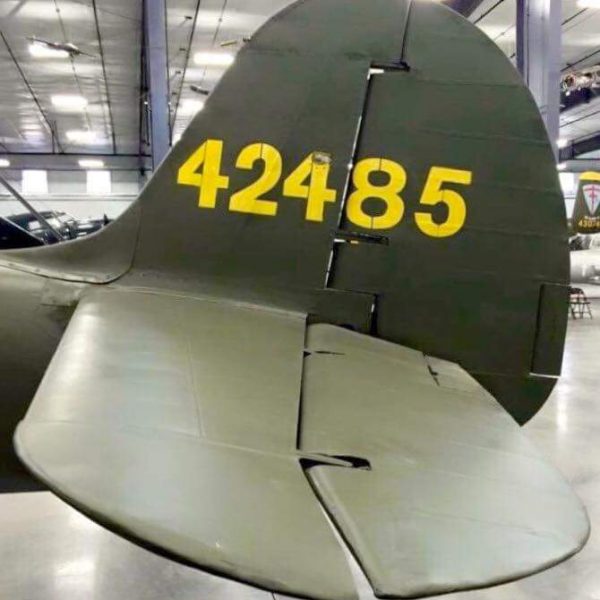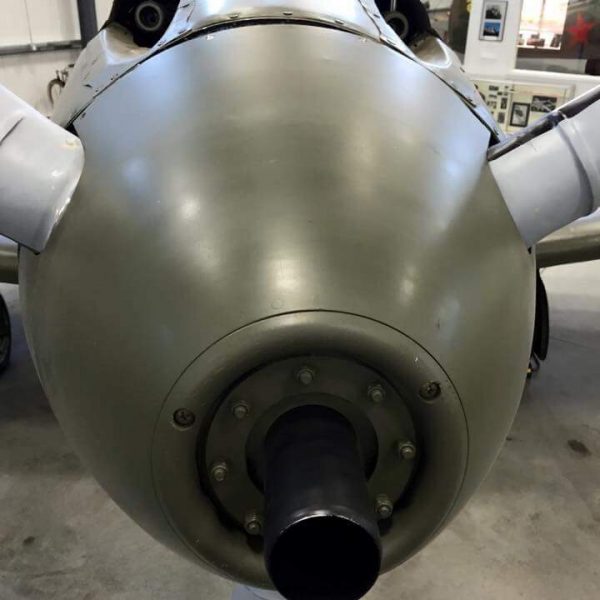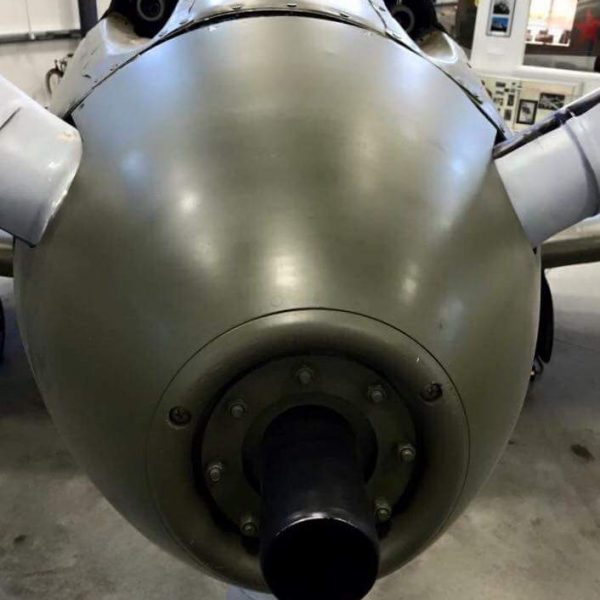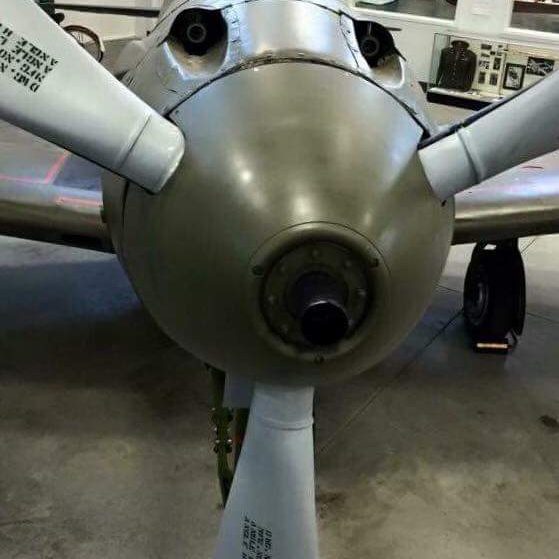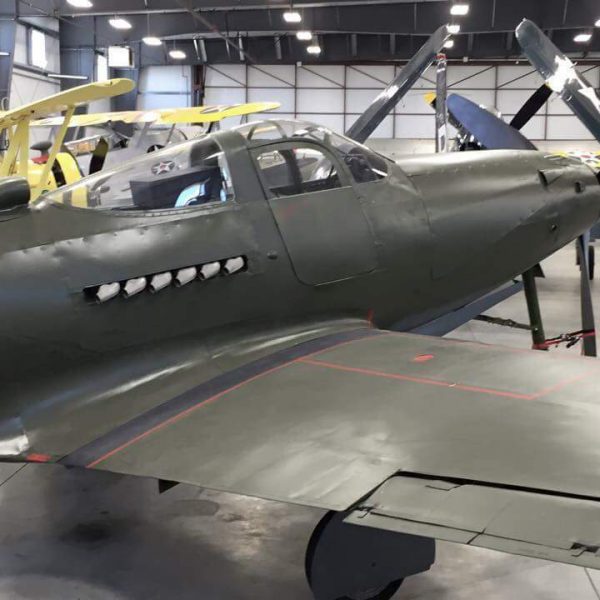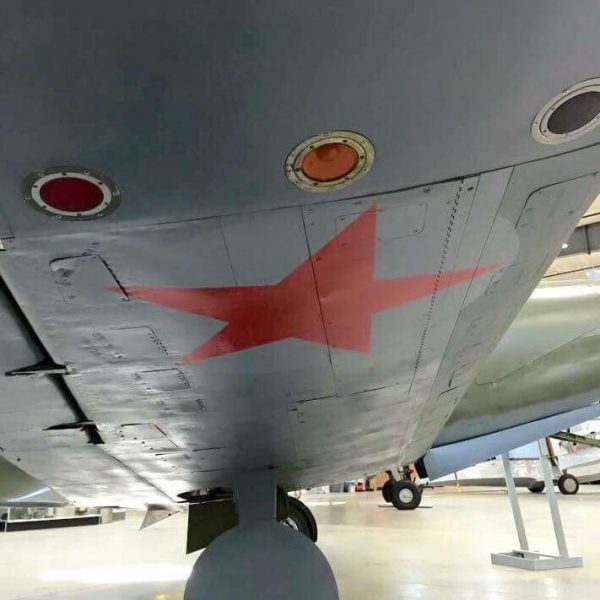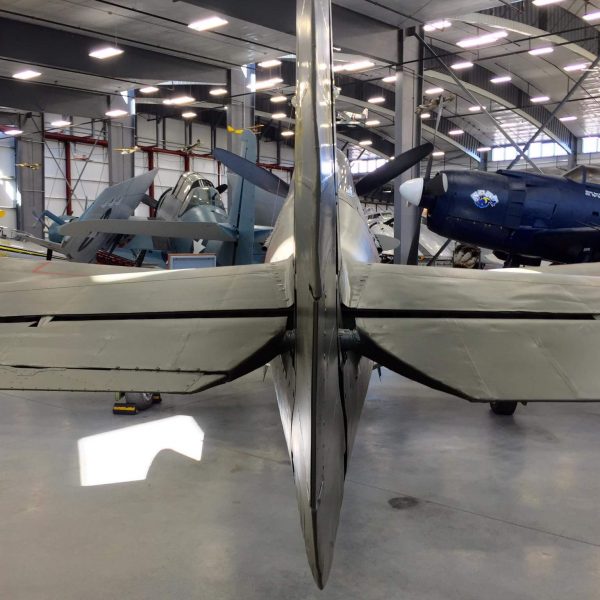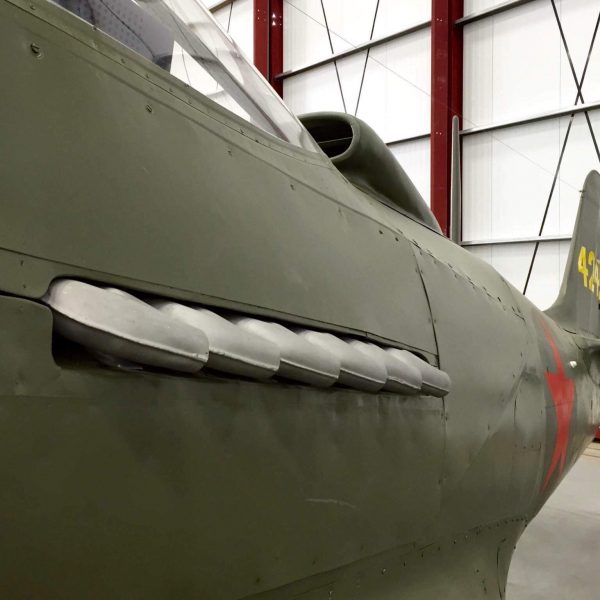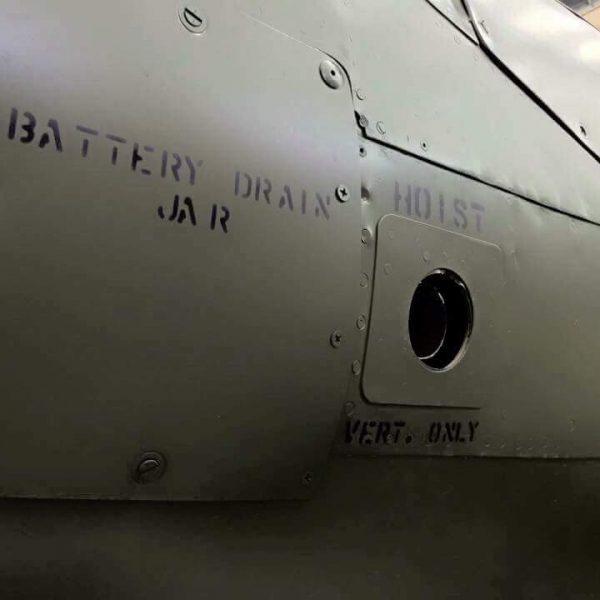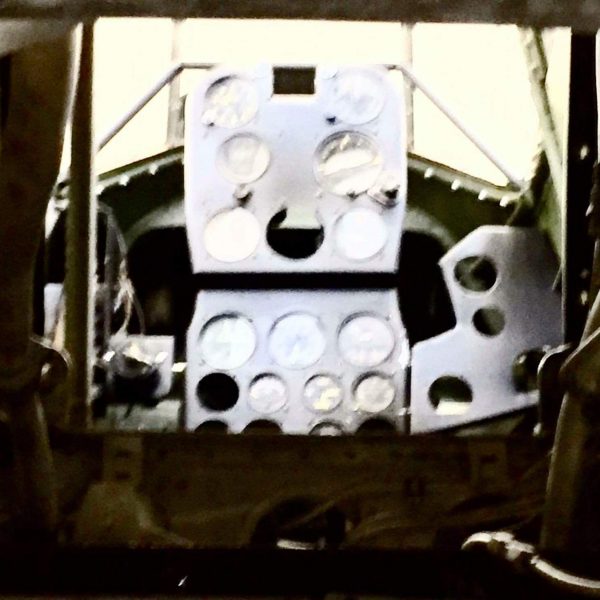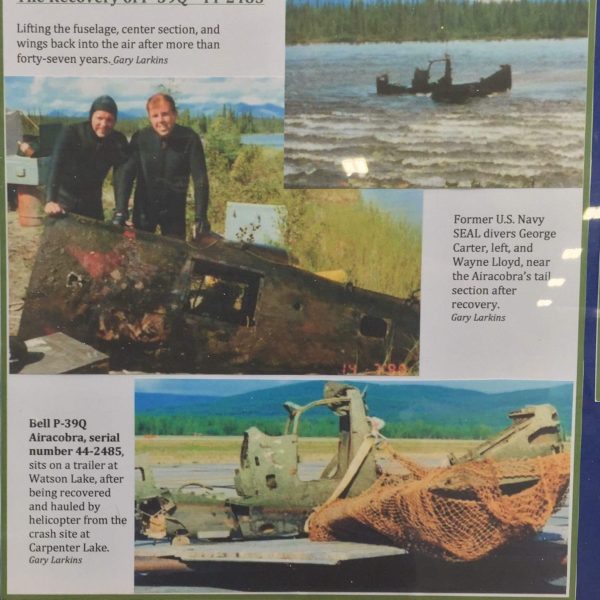Bell RP-39Q Airacobra
Bell RP-39Q Airacobra, serial number 44-2485. This particular aircraft did not see combat action. It was recovered from Carpenter Lake in British Columbia and restored by Pacific Fighters and is painted in Soviet Air Forces markings. My photos at Erickson Aircraft Collection in Madras, Oregon where it is one their few aircraft on static display rather than airworthy.
Nicknamed “Little Shaver” by Russian pilots – shaving referring to ground strafing – the P-39 was one of the first single-seat fighters fitted with tricycle landing gear. It is notable by the fact that its Allison V-1710-85 engine was placed behind the cockpit, with the drive shaft running under the pilot’s feet. Also, the cockpit doors were of the “swing” automobile type. Not unlike other aircraft, a tail fin fillet was added to compensate for yaw. Later versions were armed with a 37 mm cannon firing through the propeller hub, a pair of .50 cal. machine guns top-mounted on the cowling and firing through the propeller arc, and another in packs in each wing, and was capable of carrying 500 lbs. of bombs. Of the over 9,500 built of this Bell Aircraft Corporation design, about half were delivered to the Soviet Air Forces to great effect – via Britain initially, which had received but largely rejected the aircraft (one squadron used them operationally near Dunkirk) then via Fairbanks, Alaska, then via Iran. Russian pilots used the aircraft very successfully in close air support as well as in air-to-air combat (in spite of the common belief that its lack of a supercharger relegated it to ground attack). U.S. and other Allied forces also used the Airacobra in the SW Pacific, Mediterranean and Eastern Fronts, the U.S. using it in Alaska against the Japanese as well.


